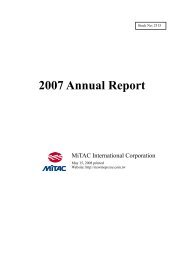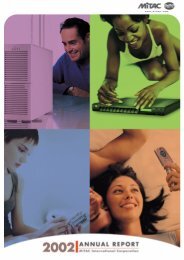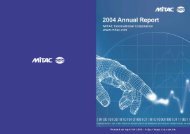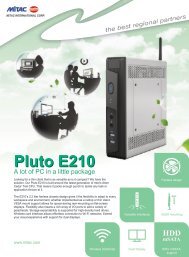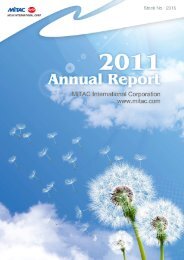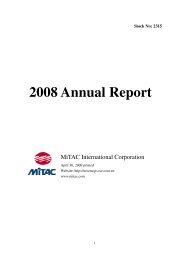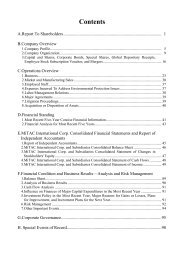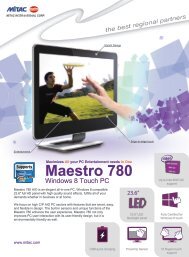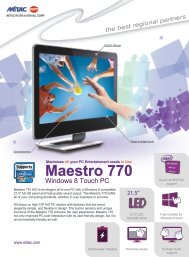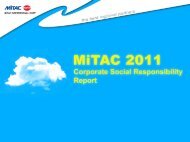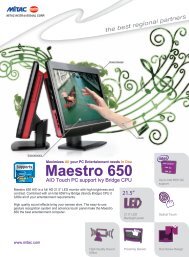Letter To Shareholders - Mitac
Letter To Shareholders - Mitac
Letter To Shareholders - Mitac
You also want an ePaper? Increase the reach of your titles
YUMPU automatically turns print PDFs into web optimized ePapers that Google loves.
C. When a company’s treasury stock is retired, the treasury stock account should<br />
be credited, and the capital surplus- premium on stock account and capital stock<br />
account should be debited proportionately according to the share ratio. An<br />
excess of the carrying value of treasury stock over the sum of its par value and<br />
premium on stock should first be offset against capital surplus from the same<br />
class of treasury stock transactions, and the remainder, if any, debited to retained<br />
earnings. An excess of the sum of the par value and premium on stock of<br />
treasury stock over its carrying value should be credited to capital surplus from<br />
the same class of treasury stock transactions.<br />
D. The cost of treasury stock is accounted for on a weighted-average basis.<br />
E. When the Company recognizes investment income (loss) and prepares financial<br />
statements, it regards the shares of the Company held by subsidiaries as treasury<br />
stocks and discloses the pro forma information in the statement of income about<br />
the condition assuming that the shares of the Company held by subsidiaries are<br />
regarded as investments instead of treasury stocks.<br />
26) Use of estimates<br />
The preparation of financial statements in conformity with generally accepted<br />
accounting principles requires management to make estimates and assumptions that<br />
affect the amounts of assets and liabilities and the disclosures of contingent assets<br />
and liabilities at the date of the financial statements and the amounts of revenues<br />
and expenses during the reporting period. Actual results could differ from those<br />
assumptions and estimates.<br />
27) Business combination<br />
The Group adopted the R.O.C. SFAS No. 25, “Accounting for Business<br />
Combination - Purchase Method” to account for any business combination<br />
transactions.<br />
3. EFFECT OF CHANGES IN ACCOUNTING PRINCIPLES<br />
1) Inventories<br />
Effective January 1, 2009, the Group adopted the amendments to R.O.C. SFAS No. 10,<br />
“Accounting for Inventories”. This change in accounting principle had no material effect<br />
on net income for the year ended December 31, 2009.<br />
2) Share-based payment ─ employee compensation plan<br />
Effective January 1, 2008, the Group adopted R.O.C. SFAS No. 39, “Accounting for<br />
Share-based Payment”. This change in accounting principle had no material effect on<br />
net income for the year ended December 31, 2008.<br />
3) Employees’ bonuses and directors’ and supervisors’ remuneration<br />
Effective January 1, 2008, the Group adopted EITF96-052 of the Accounting Research<br />
and Development Foundation, R.O.C., dated March 16, 2007. As a result of the adoption<br />
of EITF96-052, net income decreased by $17,080 and earnings per share decreased by<br />
$0.01 dollar for the year ended December 31, 2008.<br />
~107~



